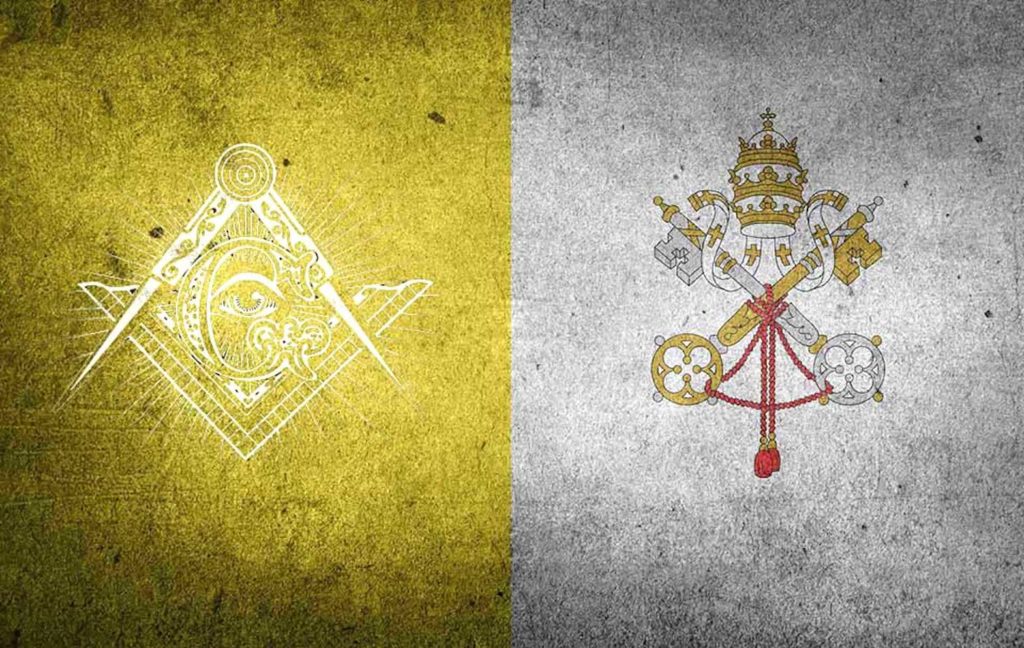
Catholic Emilio Aguinaldo (later an Aglipayan), who had a special devotion to St. Mary Magdalene, claimed that the success of the 1896 Revolution was “Masonically inspired, Masonically led, and Masonically executed.”
Gen. Aguinaldo, the first and youngest Philippine President, hitched a ride on the Masonry bandwagon in 1895. Manuel L. Quezon, President of the Commonwealth, became the first Filipino Grand Master of the Grand Lodge of the Philippines (1917). José P. Laurel, President during World War II, and Manuel Roxas, the first President of the independent Republic were also Freemasons.
Great men of great vision. Champions of the Propaganda Movement, the ilustrados, Katipuneros, and countless national leaders knew in general terms that once they adhered to the secret fraternity they automatically became excommunicados.
Francis Burton Harrison (1873-1957), Governor-General of the Philippines, writes in his diary that, in a dinner at President Quezon’s house in Pasay, he “saw young Aurora (Baby) Quezon; they call me her ‘honorary godfather’ because at her christening in the Cathedral in 1920 the Archbishop refused to accept me as godfather because I was a Mason.”
At 83, François-Marie Arouet (1694-1778), known by his nom de plume Voltaire, was initiated into Freemasonry at la Loge des Neuf Sœurs in Paris in the presence of then US Ambassador to France Benjamin Franklin.
With his Écrasez L’infme, “Crush the infamous!” at times translated as “Smash the rogues!” and “Crush the monster!” Voltaire wished death on the Catholic Church, the foremost bearer of dogmas and superstitions. With no single effort squandered, he undermined the ecclesiastical authority, for he saw that Christian bigotry and religious practices of his time were “infamous.”
Freethinkers idolized Voltaire like he was Coeus, the Titan god of intelligence and foresight. They loved his letter addressed to King Frederick II of Prussia, dated 5 January 1767, where he expressed his inner thoughts about Christianity. In his own words, Christianity is the most ridiculous, the most absurd, and the bloodiest religion which has ever infected this world. La nôtre [religion] est sans contredit la plus ridicule, la plus absurde, et la plus sanguinaire qui ait jamais infecté le monde.
In the modern times, the Masonic Supreme Council of France sought “the battle waged between Catholicism and Masonry (which) is a battle to the death, without truce.”
But where art thou now, o destroyer of Christianity? The potent forces from Roman Emperor Nero of the first century to the Protestant Reformers, including John Wycliffe, Martin Luther, Henry VIII, John Calvin, Thomas Cranmer, from Maximilien Robespierre to Voltaire, and all who dug the grave of Catholicism – all of them have vanished like dust in the wind.
That particular trip to the United States in 1930, President Quezon found himself seated on the ship’s deck for long hours. He stood by the ship’s stern, making a series of profound reflections. There were nights he was tossing in his bed, unable to sleep. While on that long voyage, he was calculating but determined.
“Catholic-born Manuel Quezon retracted Masonry on his 52nd birthday, 1930, aboard the S.S. Empress of Japan,” noted Time Magazine, “in the presence of Most Rev. Michael J. O’Doherty, Archbishop of Manila. Two years later he demitted (i.e. resigned) from his lodge.”
Filipino Masonic leaders are now saying that the secret fraternity has evolved since then and no longer works against any organized religion. Former SC Chief Justice Reynato S. Puno, past Grand Master of the Grand Lodge of the Philippines, insisted there’s nothing wrong if Christians/Catholics enroll themselves in Masonry.
In 2000, however, the CBCP Episcopal Commission on the Doctrine of the Faith was saying the opposite, that is, membership by Catholics in Masonry is “a grave moral disorder.” Earlier, in 1983, Rome had spoken. Freemasonry is incompatible with the Catholic morals and doctrines. The Vatican Congregation for the Doctrine of the Faith issued the official document Declaration on Masonic Associations, signed by its Prefect Joseph Cardinal Ratzinger, making it very clear for confused Catholics that the Masonic principles are “irreconcilable with the doctrine of the Church.”
Jose Mario Bautista Maximiano (facebook.com/josemario.maximiano) is the author of 24 PLUS CONTEMPORARY PEOPLE (Claretian, 2019) and MDXXI (1521): 500 YEARS ROMAN CATHOLIC (Claretian, 2020).

